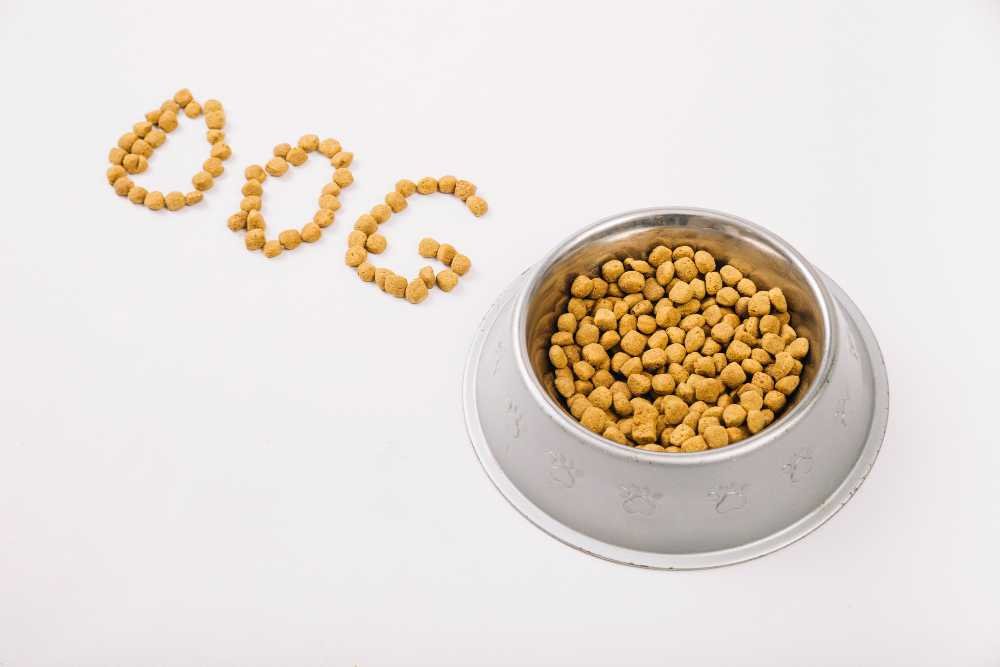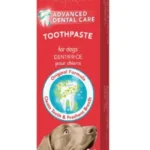Has your vet recommended yeast-free dog food for your paw friend, but you don’t know the best brand to buy? or why it is important? Yeast infection is common in dogs and can manifest in different ways. We will review the eight best yeast-free dog foods and discuss everything you need to know about yeast infections.
What is Anti-Yeast Dog Food and Why You Might Need It
Yeast-free dog food is a type of dog food free of any yeast in its ingredients. Anti-yeast dog food helps prevent or control yeast overgrowth, thus strengthening a dog’s immune system. It is suitable for all dogs but recommended especially for dogs with yeast or fungal infections.
While yeast and fungal infections are common in dogs, they are quite uncomfortable. Luckily, yeast-free dog food helps manage the yeast in their bodies.
8 Best Yeast-Free Dog Food 2023
After learning of the yeast infection, a pet owner first thought is, “What is the best dog food for a dog with yeast problems?”
Yeast is a common ingredient in dog food. So, if you are wondering which dog food does not have yeast in it, here are eight options for you.
1. Blue Buffalo Wilderness Grain-Free Dry Dog Food
At the top of our list is a yeast-free dry dog food from Blue Buffalo. In place of yeast, the Blue Buffalo Wilderness adds high-quality vegetables like sweet potatoes and fruits like cranberries and blueberries, providing nutritional value to your dog.
The first ingredient is chicken which is high in protein to ensure your fur friend gets enough energy and builds muscle. Blue Buffalo is also high in omega fats that promote brain and eye development and a shinier coat.
2. We Feed Raw Dog Food
If your dog is prone to yeast or fungal infections and enjoys raw food, then We Feed Raw should be your top consideration. It meets the AAFCO standards and does not contain fillers, preservatives, or dyes. Their meat is human-grade meat sourced from USDA.
The high-quality ingredient We Feed Raw uses makes it suitable for dogs with allergies as it does not contain carbs or sugars. It is best for adult dogs and comes in different flavors- venison, beef, lamb, duck, chicken, and turkey.
3. Iams Proactive Health Smart Puppy Dry Dog Food
The best yeast-free dog food for your pup is this Iams dog food. The first ingredient is chicken, a protein source for your young dog to build muscle. Iams also has carrots, an excellent source of potassium, vitamin A, and fiber, which your puppy needs.
Besides being yeast-free, Iams is also packed with minerals and vitamins, including omega fats, for eye and brain development, which your puppy needs. Iams contain prebiotics (fructooligosaccharides) which will help your pup’s gut and help them build a strong digestive system. The glucosamine in the food will help your little best friend develop stronger joints.
4. Nutrisca Grain Free Lamb &Chickpea Recipe Dry Dog Food
Keep your pup healthy, happy, and shiny with this Nutrisca product. It is a high-protein food without yeast, grains, or potatoes that offers your pup healthy ingredients like cranberries, carrots, blueberries, and apricots.
Nutrisca Grain-Free contains no fillers like corn, soy, or wheat. Instead, it uses high-quality meat like an antibiotic-free lamb to meet your dog’s protein requirements. What I love most about Nutrisca is it offers minerals in a chelated form that dogs easily absorb.
5. Natural Balance Grain-Free Dry Dog Food
If you are dealing with a sensitive dog and trying to find the perfect yeast-free dog food, try this Natural Balance brand. This brand uses limited ingredients to lower the risk of allergic reactions from dogs. Salmon is the first ingredient; rich in protein and has high omega fats.
It is fortified with taurine, which offers numerous benefits like preventing obesity, controlling diabetes, etc. They do not use common filler ingredients like soy, corn, and wheat, which are common causes of stomach upset in dogs.
6. Purina ONE Natural True Instinct with Turkey & Venison
Are you shopping for the best yeast-free dog food after your vet recommends it? You are probably looking for a brand that will offer value for your money since this new purchase may not be planned for. Purina ONE is a great place to start. The main ingredients are turkey and venison, which are excellent for the price. Thus, offering value for the money.
Besides the high protein content, this Purina One dog food is also loaded with minerals, vitamins, and taurine, which can help your pet with health issues. You don’t have to worry about preservatives, dyes, or fillers like corn, soy, and wheat.
7. Blue Buffalo Life Protection Dry Dog Food
Making its way to our list again is another yeast-free dog food by Blue Buffalo. This dry yeast-free dog food lists the first ingredient as chicken, with peas as an additional source of protein.
Some fruits and vegetables in this dry dog food are apples, blueberries, pumpkins, and spinach. These are great antioxidants that will ensure your dog remains healthy. What we love most about this food by Blue Buffalo is the calcium and phosphorous, which keeps our dog’s bones and teeth strong and healthy.
8. Taste of the Wild Sierra Mountain Grain-Free Dry Dog Food
Most dogs enjoy lamb meat, the first ingredient listed by the Taste of the Wild Sierra Mountain. Other ingredients include real vegetables and fruits like sweet potatoes, tomatoes, peas, and blueberries. These vegetables and fruits are a great source of healthy fiber and help boost the immune system.
Taste of the Wild Sierra Mountain is fortified with minerals and vitamins, which dogs need to enjoy a balanced diet. Some live probiotics help the dog’s immune system.
These eight products are our top picks for the best dog food for yeast infections.
Why You Should Consider Anti-yeast Dog Food Even if Your Dog Does Not Have Yeast Infection
Most dog owners use anti-yeast dog food once their vet recommends them to use it and go back to regular food as soon as the yeast infection clears. However, you can use yeast-free dog food before or after your vet recommends it.
Anti-yeast food is recommended for several reasons. First, is it easier for your dog or pup to digest yeast-free food since food with yeast cause stomach discomfort and bloating in most dogs? Second, the high sugar content in yeast also leads to weight gain and can cause diabetes in the long run. Third, dog food is also best for dogs with intolerance problems or allergies. Therefore, you might want to switch to yeast-free food in the long run.
Understanding Yeast Infections in Dogs
Getting anti-yeast dog food because your vet recommends it is not enough. It is important to understand as much as you can about yeast infections in dogs to avoid recurrent infections.
What Causes Yeast Infections in Dogs?
There are different reasons why dogs get yeast infections. A dog’s immune system is a major cause of yeast infections. A dog whose immune system is underactive can develop a yeast infection. Similarly, a dog whose immune system is overactive can cause allergic reactions and, consequently, yeast infections.
If your dog has severe allergy issues, see a vet. A veterinarian will recommend the best medication to put the allergy under control. Avoid OTC drugs for your dog since some medications could interfere with the balance of good bacteria, encouraging yeasty growth.
The environment your dog is in can cause yeast infections. If your dog stays in an environment with air pollutants like cigarette smoke, mold, pollen grains, and fumes from cleaning products, they can cause yeast infection.
Feeding is also a leading cause of yeast infections in dogs. A dog that eats foods high in sugar and carbs is more likely to develop yeast infections. The weather can also cause yeast infections since yeast grows in a moist environment. So, when the humidity and temperature are high, there is an increased risk of your dog suffering from a yeast infection.
How to avoid yeast infection in dogs
Because yeast grows in a moist environment, ensuring your dog is dry is important. If you bathe your dog or occasionally take walls, ensure you dry your dog, especially in the ear region. It could be hard to dry the ear region with folds in their ears. Water and dirt particles can get trapped and cause yeast infections.
How is Yeast Infection in Dogs Treated?
Before rushing to treat your dog, it is essential to get a professional diagnosis. Schedule a vet visit. If they confirm the diagnosis to be a yeast infection, they can make an informed diagnosis using specialized tools, e.g., an otoscope to see into the ear canal. They will then recommend different treatments depending on the severity of the infection. Your vet can recommend the following:
- Topical cream- your vet can ask you to buy a topical cream you will apply to the infected area. This is a common treatment when the infection is just starting and affects a small area.
- Medicated bath- if your dog does not have secondary infections, your vet might recommend an antifungal medicated shampoo that you will use to wash your dog. Most vets recommend washing your dog using the shampoo for at least three days a week for seven weeks or more, depending on their analysis of the infection
- An ear-cleaning solution- your vet might prescribe an ear-cleaning solution since the ears are a hotspot for infections.
How to Tell a Dog Has Yeast Infection
A common way to know if your dog has yeast infection is to check its skin or the area around the ears. It could be a yeast infection if you notice the skin is irritated and emanating a distinct odor. Yeast infections are an extreme cause of discomfort and sometimes indicate a severe underlying issue.
Signs and Symptoms to Watch Out For
- Change in the skin- if you notice your dog’s skin color or texture has changed, it could indicate an onset of a yeast infection. The skin of a dog with a yeast infection may turn red or pink and may become thick and leathery. When your dog’s skin suddenly becomes greasy, scaly, or flaky like it has dandruff, it could be a yeast infection
- Itchiness- yeast infections are quite itchy, and your dog might be scratching and rubbing more often on the affected area to relieve the itchiness
- Shaking and tilting the head- if your dog recently shakes and tilts its head, it could indicate a yeast infection. Since yeast infections happen mainly in the ears, your dog may occasionally shake and tilt its head, hoping to get relief
- Odor- does your dog have an odor even after washing? Yeast infections have a distinct musty or cheese-like smell. Usually, this odor is the first indicator of a yeast infection
Other signs and symptoms to watch out for include hair loss, majorly when the yeast infection affects the ear. Redness, swelling, and continuous licking on the infected area as the dog seeks relief can show a yeast infection.
Does my dog have an ear mite, or is it a yeast infection?
Yeast infections majorly affect a dog’s ears and lead to the dog rubbing its ears and shaking its ears. A dog with a yeast infection can also have red ears and brown discharge from their ears. Sometimes, pet owners are confused about whether their dogs have ear mites or yeast infections.
A yeast infection causes a brown discharge, while discharge from ear mites is dark, crusty, or waxy. You can easily see ear mites in a dog’s years, while a yeast discharge may be hard to tell, especially in the initial stages. Schedule a vet visit if you are unsure what is ailing your dog. They can examine your dog and recommend treatment.
Is there any connection between a dog’s breed and yeast infections?
While all dogs can get yeast infections, some breeds are more prone to yeast infections. Breeds with floppy ears, excess skin folds, and hair in the inner ear canal are more susceptible to yeast infections. Some of the dog breeds prone to yeast infections are:
- Shih Tzu
- Schnauzers
- Basset Hound
- Cocker Spaniel
- Golden Retrievers
- Maltese
- Labrador Retrievers
- Poodles
- West Highland White Terrier
- German Shepherd
- Dachshunds
What supplements should I get a dog with yeast overgrowth?
Some of the recommended supplements for dogs with yeast overgrowth are:
- Olive leaf powder- contains oleuropein which helps with natural yeast detoxification. Start slowly when introducing it. Give a quarter tsp to small dogs, half a teaspoon to medium dogs, and one tsp for large dogs.
- Pau D’Arco- it is a product from a native tree in the Amazon. It should be administered twice daily—200 mg for small dogs, 300mg for medium dogs, and 400 mg for large dogs.
- Goldenseal- according to this study, goldenseal can help dogs with yeast infections because it has berberine, a protective alkaloid. You can choose between dried goldenseal and goldenseal tincture. The administration will depend on the body weight. For every 20lbs, give 1tsp of powder; for tincture, give 5-10 drops once or twice daily.
- Caprylic acid- helps with yeast detoxification. You can get this from MCT oil. You should start slowly, with a quarter spoon, until your paw friend adjusts to it to avoid diarrhea.
FAQ
What is a yeast infection in a dog?
All dogs have yeast on their body, which when in the normal range, do not cause any illness. However, when the yeast overgrows, and there is an overabundance, they cause issues, and your dog is said to have a yeast infection.
Is there yeast in dog food?
Besides listing our top yeast-free dog food, we have discussed everything you need to know about yeast infection. Hopefully, you understand why yeast-free dog food helps your dog, and you can now make an informed purchase to keep your woof friend happy.
Foods to avoid for yeast overgrowth in dogs
If your dog has yeast overgrowth, avoid feeding them foods high in carbohydrates and sugars, as they encourage yeast growth. Foods high in carbs include potatoes, grains, and starchy vegetables- carrots, pumpkin, and tapioca.
What ingredients should I include in homemade yeast-free dog food?
- MCT, ACV, and Turmeric- help with yeast detoxification
- Bone meal- provides necessary nutrients and minerals
- Kelp- is high in iodine, which helps balance the thyroid gland. Yeast is linked to hypothyroidism, and balancing the thyroid might help deal with a yeast infection
- Ginger- promotes liver function and gut health
- Kale and broccoli- great antioxidants which boost the immune systems
- Pumpkin seeds- are rich in vitamin E and also help with intestinal worms
- Chlorella- supports the body from environmental toxins and exposure to heavy metal





